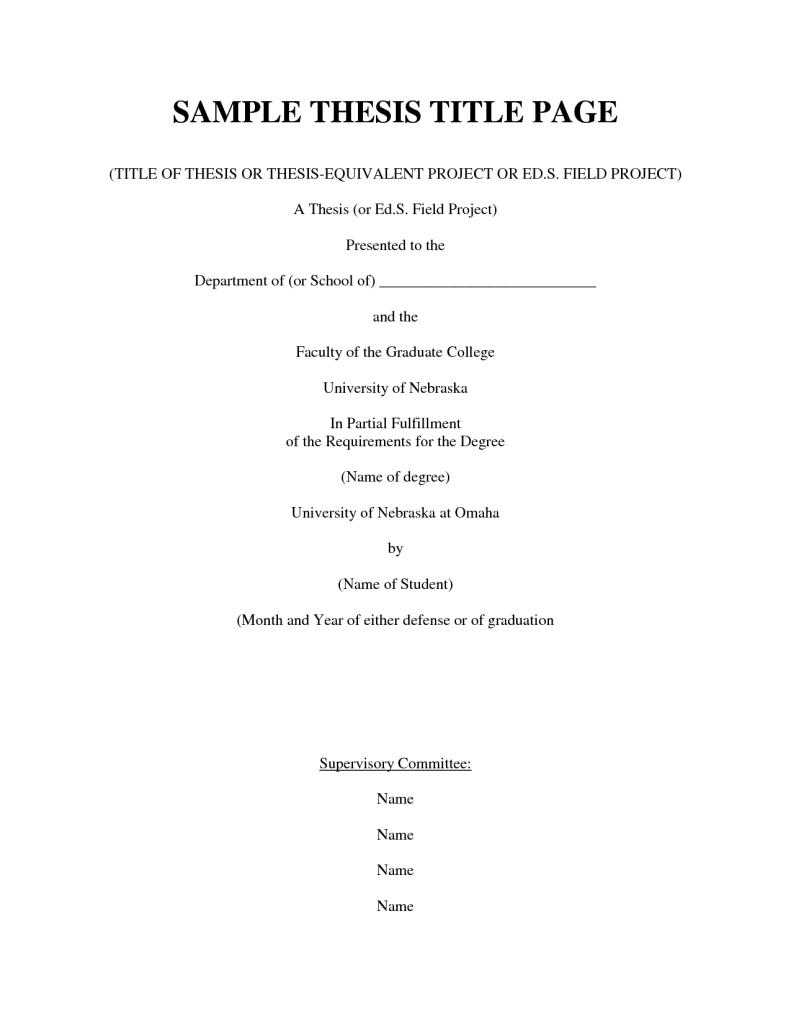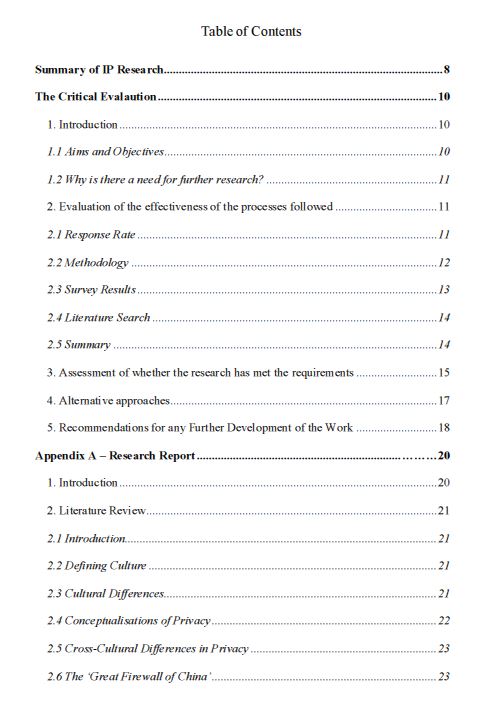Dissertation Writing
- Clear and explicit about the subject
- Objective and detached about the arguments and conclusions drawn
- Rational
|
Before you submit your dissertation in, check the following Content |
|
| The text answers the central question posed by the title | The main line of argument is clear, not lost in a sea of detail |
| Sufficient space (words) has been given to the most important points | There is sufficient evidence to support the arguments |
| All of the information included is relevant to the question | The dissertation contains evaluative comments as well as description |
| Style and Presentation | |
| The dissertation is written in the third person (not ‘I’, ‘me’ or ‘my’) | The language is clear and straightforward |
| The dissertation is presented with the correct font, font size and line spacing | Sentences are of reasonable length and are uncomplicated |
| Spelling, grammar and punctuation are correct | Technical vocabulary is used correctly |
| Each paragraph is well structured | The words used are my own (there is no plagiarism) |
| Ideas are presented in the right order and there is no repetition | There is nothing the reader will find confusing |
| The text is not too chatty or flippant and is free of slang and colloquialisms | The dissertation is within the word limit |
| The introduction summarises the argument/ approach that will be taken | The assignment front sheet has been completed |
| The conclusion sums up the main points | The conclusion does not introduce any new material |
| References | |
| Appropriate references have been used | All sources have been acknowledged correctly and included in the reference list |
| Have you taken account of any feedback you have been given for previous work? | |
Dissertation writing uses:
- Evidence (correctly referenced) to support the arguments or question perspectives
- A critical approach to the subject
Introduction: should:
- Contain a brief explanation of the topic and context
- Identify the main themes or concepts
- Outline what the topic means – its relevance
- Describe the approach to the topic
- Set a clear direction and structure to the dissertation
Main Body
Contains all the points to be made in the argument and presentation of the material in a series of paragraphs
Conclusion
Contains no new material. It:
- is a reminder of:
- the question posed in the dissertation title
- the important features of the argument main themes
Is a summary of:
- The main points
- The specific evidence presented
- Explains the significance of the conclusions
- What general points can be drawn from the writing as a whole?
The conclusion should clearly signal to the reader that the piece of writing is completed and leave a clear impression that the purpose of the text has been achieved. Remember to refer back to your title – you could use words from the question to prove that you have answered the whole question.
Think about the lasting impression your reader will have.
What is a paragraph?
A paragraph is series of sentences;
- The first sentence introduces the main idea of the paragraph
- The other sentences develop the topic of the paragraph: use relevant definitions, examples, details, evidence, quotations, citations
- The final sentence leads up to the next paragraph – use transition words (see handout on the Study Skills page on Moodle) to indicate to the reader the ‘route map’ of the dissertation.
NB a paragraph is longer than one sentence and shorter than a whole page.
Tips for Good Dissertation Writing
Use source materials – you do not have an opinion – you must remain emotionally neutral and use evidence (all referenced) from lecture notes; reading, case studies. Avoid writing in the first person. This means avoiding the use of phrases like ‘I think’ or ‘I agree’. Instead use the third person, ‘It can be argued that’ for example, sounds more academic. Other useful phrases might be ‘It can be seen that’, It has been found that’.
Be cautious. Academic writing generally sounds cautious in drawing conclusions. For example a writer might say ‘the evidence suggests that’ rather than ‘this proves that’. Use the full form of words and phrases, not contractions like ‘don’t’ or can’t’.
Be precise. Avoid phrases like ‘some people disagree’ and ‘some psychologists agree that’. Give the reader enough detail for them to know exactly what you are talking about.
Avoid ‘lazy’ words such as got, did and nice.
For example, rather than saying ‘a lot of research was done’ say ‘extensive research was conducted’. Rather than saying ‘Smith did a study’ say ‘Smith conducted research’.
Avoid slang and colloquialisms.
Avoid unnecessary words and phrases such as ‘a man called Smith (2015) …’
Simply say ‘Smith (2015) found…’
Develop an academic vocabulary. You will already be coming across new terms in your course. Don’t use these terms without understanding them but if you do use them appropriately your writing tends to sound more precise and hence more academic.
If you use someone else’s ideas then you should reference them. To try and pass ideas off as your own is called plagiarism. Even if you put the ideas into your own words they still belong to the original author and this should be acknowledged. You can do this as follows: ‘as Smith (2015) argues’ or you can give a direct quote followed by the author’s name, date and page number of the quote. Use quotes sparingly.
Proof read your work. Reading it out loud is an excellent way to check the style.
Finally – a dissertation needs a final draft.

Prompts to Support Critical Evaluation of the Literature
This resource first lists general questions on this page, and then more specific questions on the following pages. Please browse the entire list for prompts on what to think about while you are evaluating the literature.
Where is the author coming from?
- Who is the author?
- What is the author trying to convince you of?
- Is the author objective/neutral or subjective/biased? Are statements facts or opinions?
- Does the author have any vested interests (conflicts of interest)?
Where are you coming from?
- Recognize your own viewpoint.
- Remain open to consider the viewpoints of others.
- Consider how your prior knowledge and understanding relates to what the author has written.
- Following evaluation, clarify your own (possibly new) viewpoint and its social significance; ask yourself ‘so what?’
Evaluation of argumentation
- Are the arguments logical or flawed?
- What assumptions are made and are they valid or flawed?
- Are other counter-arguments omitted?
- Are there any inconsistencies in the author’s arguments?
- What evidence is provided and is it valid?
- Is any counter-evidence omitted?
- Are any authorities referred to and are they reliable?
- Are alternative perspectives and interpretations considered? Can you think of any others, e.g. ‘What if…’
- Is the writing style analytical or descriptive? Is the language used appropriate?
- Are any comparisons or analogies made appropriate?
Examples of More Specific Questions
- Publication
- Subject matter field: e.g. health, engineering
- Credibility: peer reviewed/scholarly, reputation
- Geographical location: scope
Authors
- Who is the author?
- What is their subject matter expertise?
- Affiliation / roles / qualifications / reputation?
- Geographical location: scope?
- What is the author trying to convince you of?
- Is the author objective/neutral or subjective/biased? (facts or opinions?)
- Does the author have any vested interests (conflicts of interest)?
- Funding / Acknowledgements?
- Are any conflicts of interest apparent from the funding source?
Introduction and Literature Review
- Does the introduction provide a sound rationale for the research?
- Is the research question identified clearly?
- Is it a significant question? Do you think that the research is useful?
- Does the research question follow from the information given in the introduction?
- Is the hypothesis a testable one?
- What theory (if appropriate) is discussed and is it relevant to the main theme?
- Are other relevant theories omitted?
- Might there be any problems actually doing this research?
- Is the literature review critical with strengths and weaknesses of previous work?
- Are works cited relevant to the research question / topic?
- Are the references recent?
- Are the references primary ones?
- Are there varied sources (peer reviewed articles, books etc.)?
Methods
- What is the overall methodology and is it appropriate for the research question?
- What methods were used, why and were they appropriate?
- Are there any other methods which might be more appropriate?
- What are the strengths and weaknesses of the chosen method?
- Who or what were the participants or objects of focus for this research?
- How was the sample selected and might there be any bias?
- Was the sample relevant to the research?
- Was the sample size representative of the population?
- How was the independent variable manipulated?
- Are there any problems with this?
- Are there any possible confounding variables?
- How was the dependent variable measured?
- Is the data likely to reliable (repeatable) and how was reliability optimized?
Results
- Recording: How was the raw data recorded?
- Analysis:
- Has the raw data been translated, reduced or manipulated in any way?
- How has the data been analysed?
- What statistical analysis has been chosen? Is this appropriate?
- Is there any other form of analysis that could have been done?
Presentation
- Are data presented in prose, tables, graphs, charts?
- Is the presentation appropriate?
- Is the presentation easy to interpret?
- Are the scales or emphases appropriate?
- Are all data shown, or only parts and why?
- Are any data missing?
- Interpretation
- Do the results help to answer the research question?
- Are there any other possible interpretations?
- Do you agree with the conclusions drawn from the data?
- Are there any other factors that could have influenced the results?
Ethics
- Are ethical considerations reported?
- Did the research conform to ethical guidelines?
- Did the research risk harming any participants, researchers or anyone else?
- Can you think of any ethical issues which have not been addressed?
- Did participants (if appropriate) give their informed consent?
- Were any other relevant permission provided?
Discussion / Conclusions
- Are conclusions logically drawn from the results?
- Are the conclusions stated clearly?
- Are the conclusions sufficiently cautious?
- Are conclusions generalized (assumed to apply elsewhere or more broadly)?
- Are any other conclusions possible?
- Have the researchers succeeded in their aims?
- How does this research compare / contrast with previous research?
- Do the researchers address the limitations of their research?
- What implications does the research have?
- What further research could be conducted?
- Does this article raise any further questions that the author doesn’t address?
References
- Are the references recent?
- Are the references primary ones?
- Are there varied sources (peer reviewed articles, books etc.)
References
Bailey, S. (2011), Academic Writing. A Handbook for International Students.3rd ed. London and New York: Routledge.
Blaxter, L., Hughes, C. and Tight, M. (2007), How to Research. 3rd ed. Buckingham: Open University Press.
Connors, K. and Seifer, S.D. (2005), Reflection in Higher Education Service-Learning,
Cottrell, S. (2008), The Study Skills Handbook.3rd ed. Basingstoke: Palgrave Macmillan.
Gillett, A., Hammond, A. and Martala, M. (2009), Successful Academic Writing. Harlow: Pearson Educational Limited.
Greetham, B. (2008), How to Write Better Essays. 2nd ed. Basingstoke: Palgrave Macmillan.
Hart, C. (1998), Doing a Literature Review: Releasing the Social Science Research Imagination. London: Sage
Kirton, B. (2010), Brilliant Study Skills: What you need to know and how to do it. Harlow: Pearson Educational Limited.
Moore, S., Neville, C., Murphy, M. and Connolly, C. (2010), The Ultimate Study Skills Handbook. Maidenhead: Open University Press.
Neville, C. (2009), How to Improve your Assignment Results. Maidenhead: Open University Press.
Page, M. and Winstanley, C. (2009), Writing Essays for Dummies. Chichester: John Wiley & Sons Ltd.
Useful Dissertation Writing Links
Dissertation Help | Dissertation Introduction | Dissertation Literature Review | Dissertation Methodology | Dissertation Data Analysis | Dissertation Results and Findings | Dissertation Discussion and Conclusions | Dissertation Bibliography | Dissertation Appendices | Dissertation Plagiarism | Dissertation Ten Top Tips





